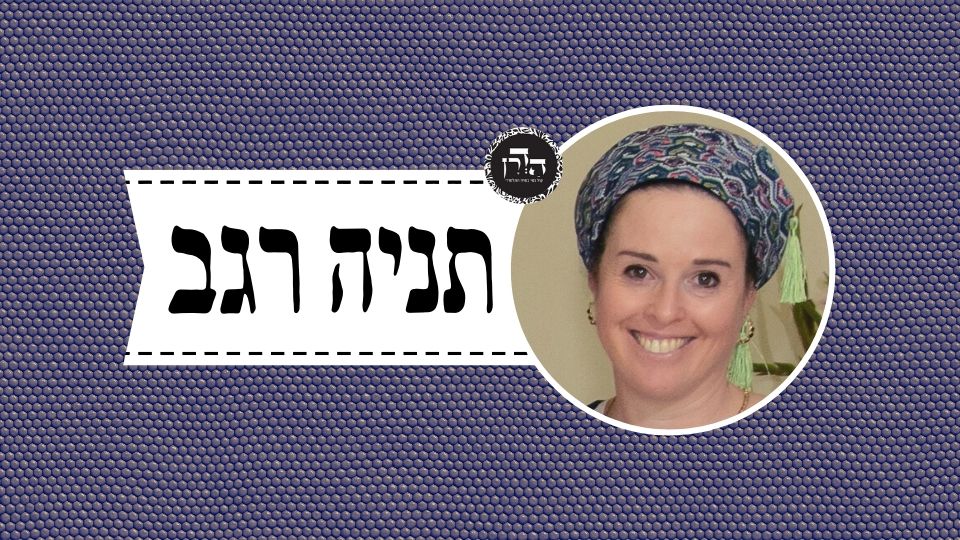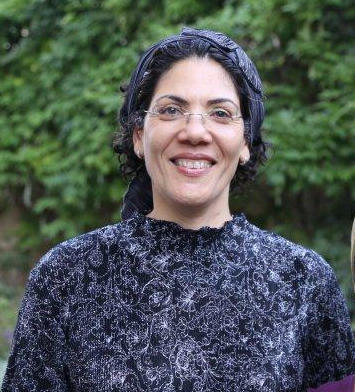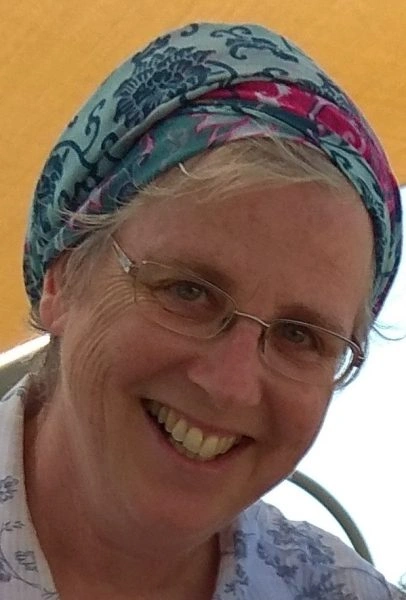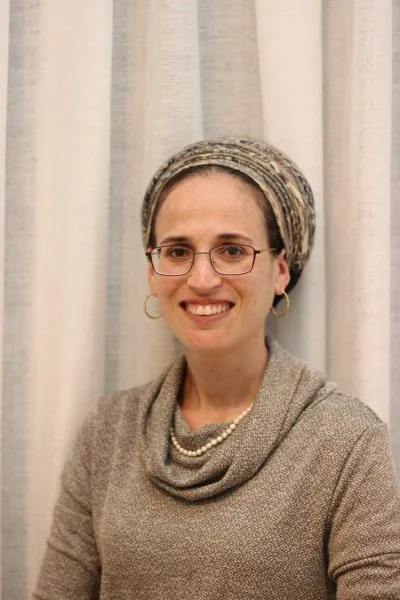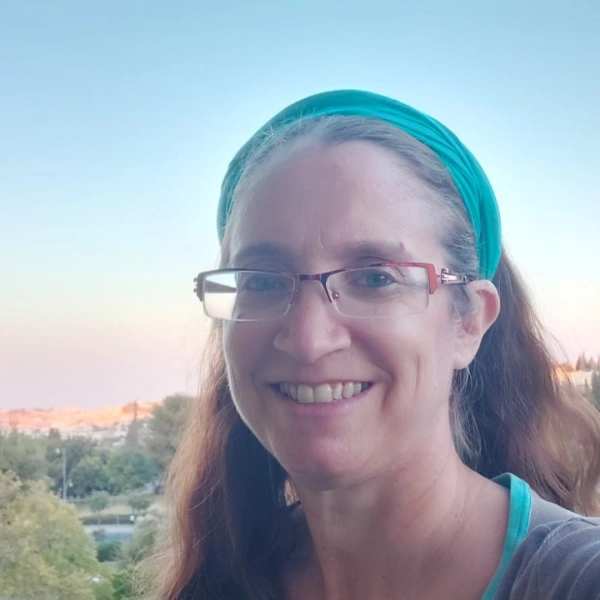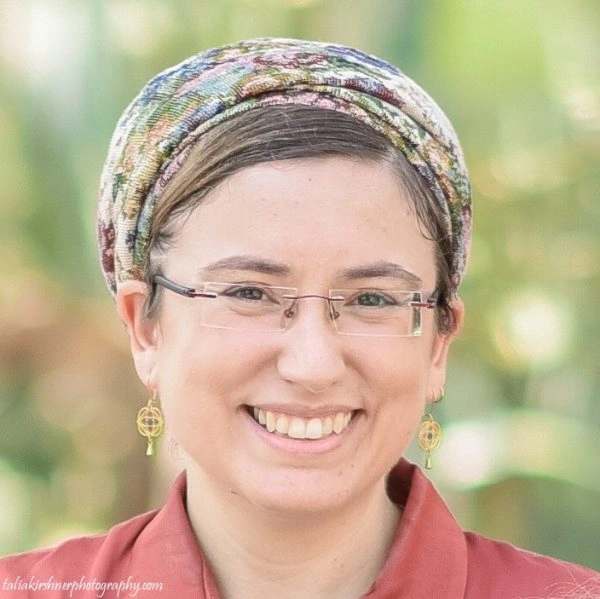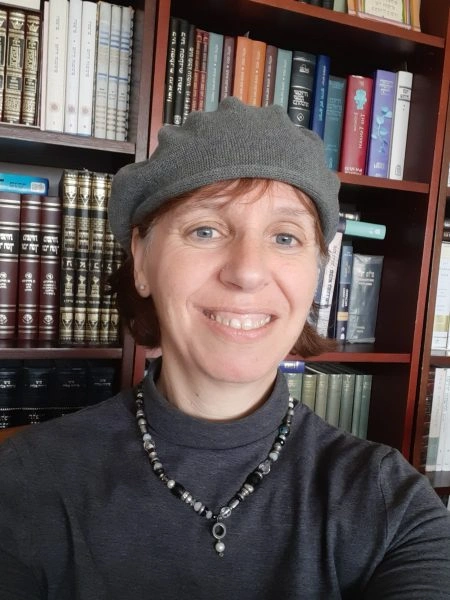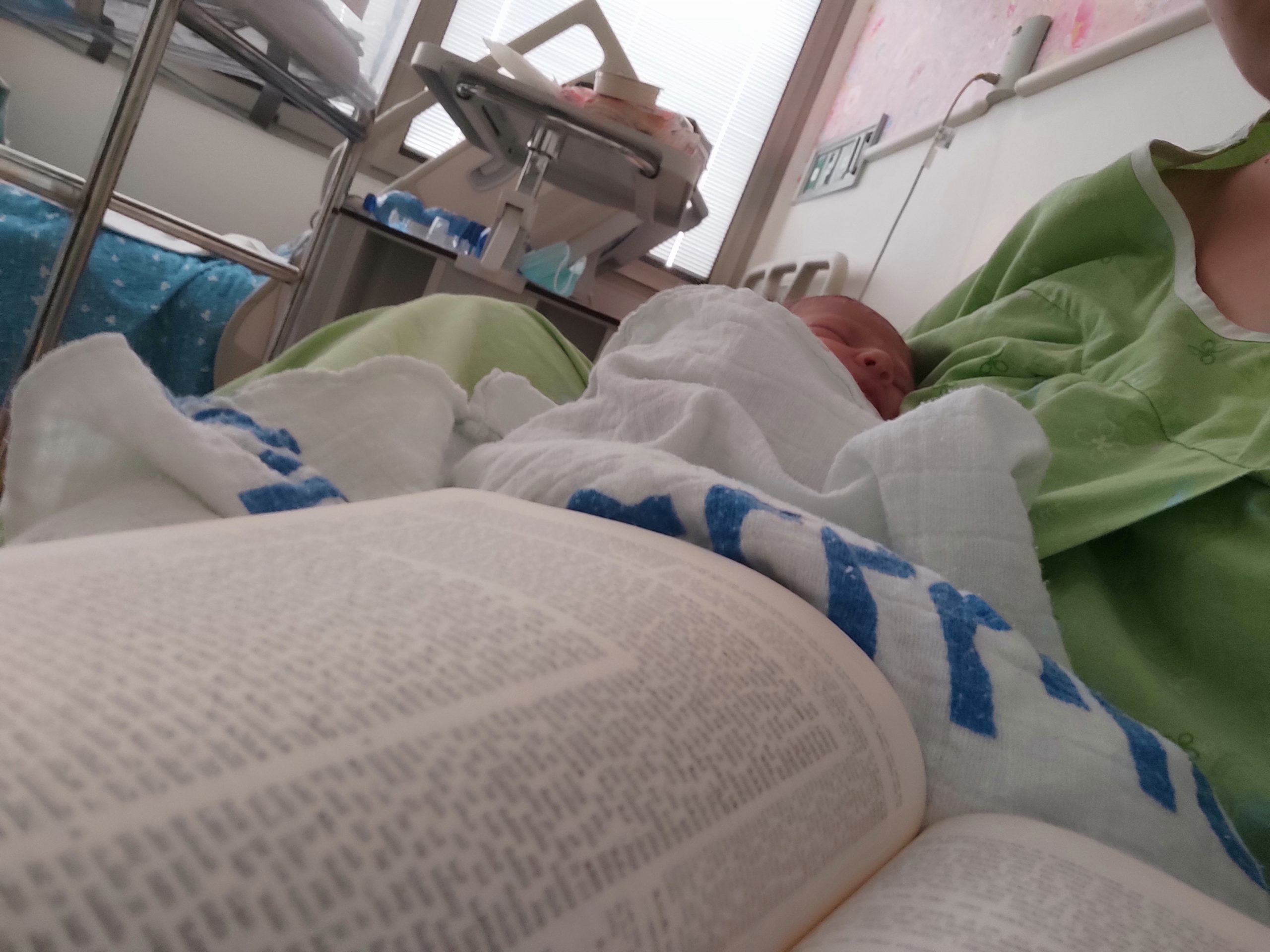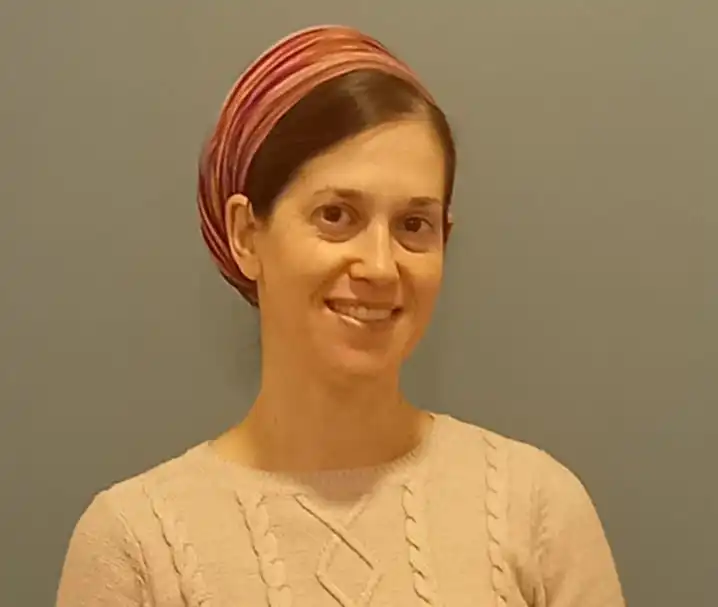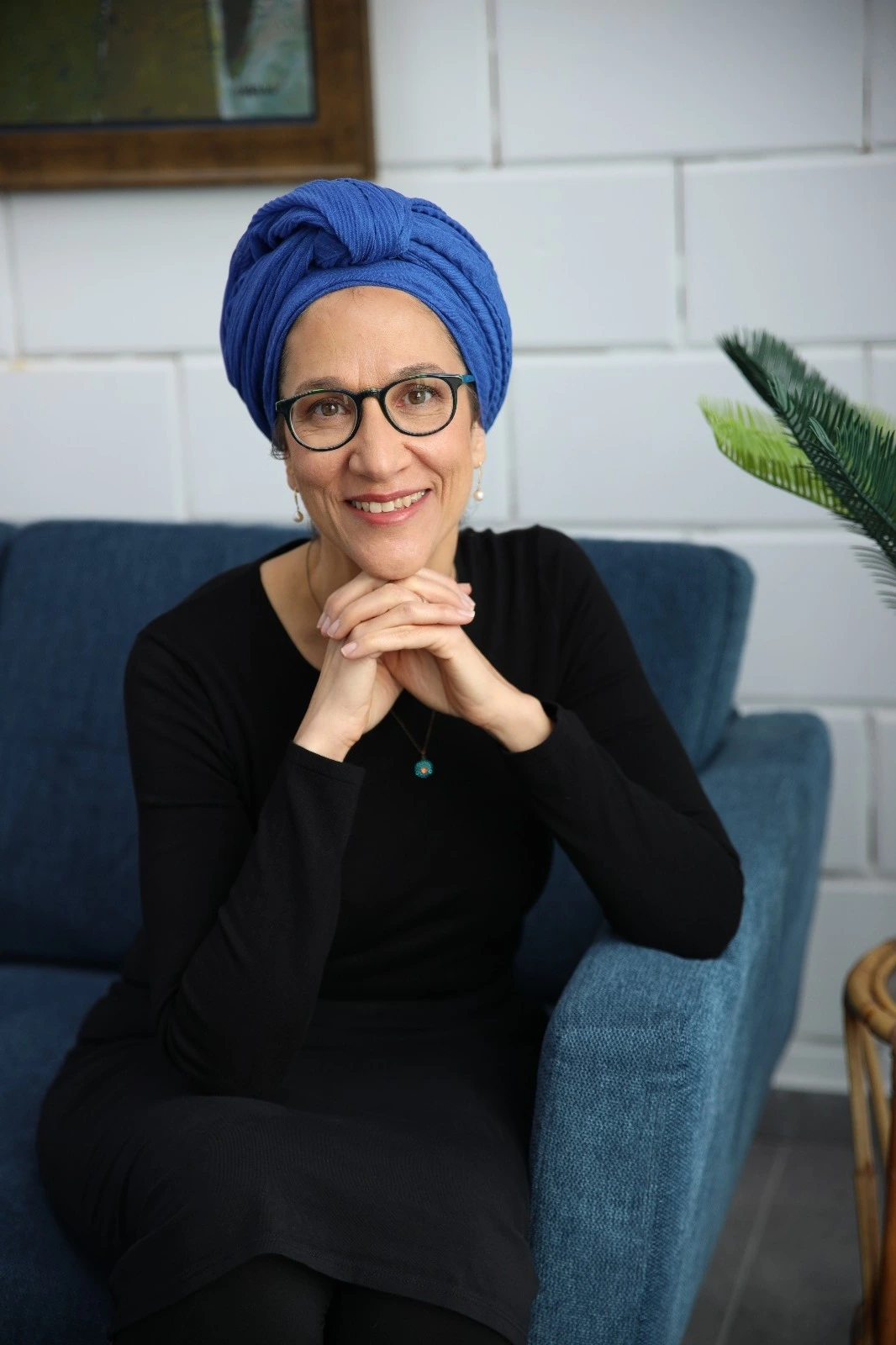סוכה נא
כְּתַנָּאֵי, (דְּתַנְיָא): עַבְדֵי כֹהֲנִים הָיוּ, דִּבְרֵי רַבִּי מֵאִיר. רַבִּי יוֹסֵי אוֹמֵר: מִשְׁפַּחַת בֵּית הַפְּגָרִים וּמִשְׁפַּחַת בֵּית צִיפְּרַיָּא, וּמֵאֱמָאוּם הָיוּ, שֶׁהָיוּ מַשִּׂיאִין לַכְּהוּנָּה.
This dispute is parallel to another dispute between tanna’im, as it is taught in a mishna in tractate Arakhin: The Temple musicians were slaves of priests; this is the statement of Rabbi Meir. Rabbi Yosei says: The musicians were not slaves; they were Israelites from the family of the House of Happegarim and the family of the House of Tzipperaya. And they were from the city of Emma’um, and their lineage was sufficiently distinguished that they would marry their daughters to members of the priesthood.
רַבִּי חֲנִינָא בֶּן אַנְטִיגְנוֹס אוֹמֵר: לְוִיִּם הָיוּ. מַאי לָאו בְּהָא קָא מִיפַּלְגִי, דְּמַאן דְּאָמַר עֲבָדִים הָיוּ, קָסָבַר: עִיקַּר שִׁירָה בַּפֶּה. וּמַאן דְּאָמַר לְוִיִּם הָיוּ, קָסָבַר: עִיקַּר שִׁירָה בִּכְלִי.
Rabbi Ḥanina ben Antigonus says: They were Levites. What, is it not that they disagree with regard to this; that the one who said that the musicians were slaves holds that the primary essence of song is singing with the mouth. Since the instrumental music is mere accompaniment, it could be performed by slaves. And the one who said that the musicians were Levites holds that the primary essence of song is accompaniment by musical instruments. Therefore, the musicians were Levites, who were tasked with the song that was part of the Temple service.
וְתִסְבְּרָא?! רַבִּי יוֹסֵי מַאי קָסָבַר? אִי קָסָבַר עִיקַּר שִׁירָה בַּפֶּה — אֲפִילּוּ עֲבָדִים נָמֵי, אִי קָסָבַר עִיקַּר שִׁירָה בִּכְלִי — לְוִיִּם אִין, יִשְׂרְאֵלִים לָא!
The Gemara asks: And how can you understand the mishna that way? According to that explanation, what does Rabbi Yosei hold? If he holds that the primary essence of song is singing with the mouth, then even slaves can also play the instruments. Why then does he require that the musicians be from Israelite families of distinguished lineage? If he holds that the primary essence of song is accompaniment by musical instruments, he should have said: Levites, yes, they may play the instruments, but Israelites, no, they may not.
אֶלָּא: דְּכוּלֵּי עָלְמָא עִיקַּר שִׁירָה בַּפֶּה. וּבְהָא קָא מִיפַּלְגִי, דְּמָר סָבַר: הָכִי הֲוָה מַעֲשֶׂה, וּמָר סָבַר: הָכִי הֲוָה מַעֲשֶׂה.
Rather, the explanation of the dispute is that everyone agrees that the primary essence of song is singing with the mouth and the musical instruments are merely for accompaniment. And it is with regard to this that they disagree: It is that one Sage holds that the event took place in this manner, i.e., slaves played the instruments, and one Sage holds that the event took place in this manner, i.e., Israelite families of distinguished lineage played the instruments.
לְמַאי נָפְקָא מִינַּהּ? לְמַעֲלִין מִדּוּכָן לְיוּחֲסִין וּלְמַעֲשֵׂר קָא מִיפַּלְגִי.
The Gemara asks: What practical halakhic difference is there whether one group or another played the instruments? The Gemara answers: It is with regard to whether one elevates a Levite from the platform to the presumptive status of distinguished lineage and eligibility to receive tithes that they disagree. Is it possible to draw the conclusion that a family is of distinguished lineage or eligible to receive tithes based on the fact that a member or ancestor of that family played a musical instrument on the Temple platform?
מַאן דְּאָמַר עֲבָדִים הָיוּ, קָסָבַר: אֵין מַעֲלִין מִדּוּכָן לְיוּחֲסִין, וְלֹא לְמַעֲשֵׂר. וּמַאן דְּאָמַר יִשְׂרָאֵל הָיוּ, קָסָבַר: מַעֲלִין מִדּוּכָן יוּחֲסִין, אֲבָל לֹא לְמַעֲשֵׂר. וּמַאן דְּאָמַר לְוִיִּם הָיוּ, קָסָבַר: מַעֲלִין מִדּוּכָן, בֵּין לְיוּחֲסִין בֵּין לְמַעֲשֵׂר.
The one who said that the musicians were slaves holds that one does not elevate from the platform to the presumptive status of distinguished lineage and eligibility to receive tithes. And the one who said that the musicians were Israelites holds that one elevates a Levite from the platform to the presumptive status of distinguished lineage but not eligibility to receive tithes. And the one who said that the musicians were Levites holds that one elevates a Levite from the platform to the presumptive status of distinguished lineage and eligibility to receive tithes.
וְרַבִּי יִרְמְיָה בַּר אַבָּא אָמַר: מַחְלוֹקֶת בְּשִׁיר שֶׁל שׁוֹאֵבָה, דְּרַבִּי יוֹסֵי בַּר יְהוּדָה סָבַר: שִׂמְחָה יְתֵירָה נָמֵי דּוֹחָה אֶת הַשַּׁבָּת, וְרַבָּנַן סָבְרִי: שִׂמְחָה יְתֵירָה אֵינָהּ דּוֹחָה אֶת הַשַּׁבָּת. אֲבָל בְּשִׁיר שֶׁל קׇרְבָּן, דִּבְרֵי הַכֹּל עֲבוֹדָה הִיא, וְדוֹחָה אֶת הַשַּׁבָּת.
§ The Gemara cites an opinion that disagrees with that of Rav Yosef. And Rabbi Yirmeya bar Abba said: The dispute between Rabbi Yosei bar Yehuda and the Rabbis is with regard to the song of the Drawing of the Water. Rabbi Yosei bar Yehuda holds that extra rejoicing also overrides Shabbat, and the Rabbis hold that extra rejoicing does not override Shabbat. However, with regard to the song that the Levites sang accompanying an offering, everyone agrees that it is part of the Temple service, and overrides Shabbat.
מֵיתִיבִי: שִׁיר שֶׁל שׁוֹאֵבָה דּוֹחֶה אֶת הַשַּׁבָּת, דִּבְרֵי רַבִּי יוֹסֵי בַּר יְהוּדָה. וַחֲכָמִים אוֹמְרִים: אַף יוֹם טוֹב אֵינוֹ דּוֹחֶה. תְּיוּבְתָּא דְּרַב יוֹסֵף! תְּיוּבְתָּא.
The Gemara raises an objection to the opinion of Rav Yosef that the dispute is with regard to the song that the Levites sang accompanying the daily offering: The song of the Drawing of the Water overrides Shabbat; this is the statement of Rabbi Yosei bar Yehuda. And the Rabbis say: It does not override even the Festival. Apparently, their dispute is with regard to the song of the Drawing of the Water. Say that this is a conclusive refutation of the opinion of Rav Yosef. The Gemara concludes: Indeed, it is a conclusive refutation.
לֵימָא בְּשִׁיר שֶׁל שׁוֹאֵבָה הוּא דִּפְלִיגִי, אֲבָל בְּשִׁיר שֶׁל קׇרְבָּן דִּבְרֵי הַכֹּל דּוֹחֶה אֶת הַשַּׁבָּת. לֵימָא תֶּיהְוֵי תְּיוּבְתָּא דְּרַב יוֹסֵף בְּתַרְתֵּי!
The Gemara suggests: Let us say, based on this baraita, that it is with regard to the song of the Drawing of the Water alone that they disagree; however, with regard to the song that the Levites sang accompanying the daily offering, everyone says that it overrides Shabbat. If so, let us say that this will be a conclusive refutation of the opinion of Rav Yosef on two counts. According to Rav Yosef, the dispute is with regard to the song of the Drawing of the Water, and not with regard to the song the Levites sang accompanying the daily offering. The above suggestion refutes both aspects of his opinion.
אָמַר לְךָ רַב יוֹסֵף: פְּלִיגִי בְּשִׁיר שֶׁל שׁוֹאֵבָה, וְהוּא הַדִּין לְקׇרְבָּן. וְהַאי דְּקָמִיפַּלְגִי בְּשִׁיר שֶׁל שׁוֹאֵבָה — לְהוֹדִיעֲךָ כֹּחוֹ דְּרַבִּי יוֹסֵי בַּר יְהוּדָה, דַּאֲפִילּוּ דְּשׁוֹאֵבָה נָמֵי דָּחֵי.
Rav Yosef could have said to you: They disagree with regard to the song of the Drawing of the Water and the same is true for the song that the Levites sang accompanying an offering. And the fact that they disagree specifically with regard to the song of the Drawing of the Water and do not specifically mention the song that the Levites sang accompanying the daily offering is to convey to you the far-reaching nature of the opinion of Rabbi Yosei bar Yehuda, that even the song of the Drawing of the Water also overrides Shabbat.
וְהָא קָתָנֵי: זֶהוּ חָלִיל שֶׁל בֵּית הַשּׁוֹאֵבָה שֶׁאֵינוֹ דּוֹחֶה לֹא אֶת הַשַּׁבָּת וְלֹא אֶת יוֹם טוֹב: זֶהוּ דְּאֵינוֹ דּוֹחֶה, אֲבָל דְּקָרְבָּן דּוֹחֶה מַנִּי? אִי נֵימָא רַבִּי יוֹסֵי בַּר יְהוּדָה, הָאָמַר שִׁיר שֶׁל שׁוֹאֵבָה נָמֵי דּוֹחֶה! אֶלָּא לָאו, רַבָּנַן — וּתְיוּבְתָּא דְּרַב יוֹסֵף בְּתַרְתֵּי! תְּיוּבְתָּא.
The Gemara asks: But isn’t it taught in the mishna: This is the flute of the Place of the Drawing of the Water, which overrides neither Shabbat nor the Festival. By inference, this is the flute that does not override Shabbat; however, the flute that accompanies the daily offering overrides Shabbat. The Gemara asks: Who is the tanna of the mishna? If we say it is Rabbi Yosei bar Yehuda, didn’t he say that the song of the Drawing of the Water also overrides Shabbat? Rather, is it not the Rabbis, and say that this is a conclusive refutation of Rav Yosef on two counts. The Gemara concludes: Indeed, it is a conclusive refutation.
מַאי טַעְמָא דְּמַאן דְּאָמַר עִיקַּר שִׁירָה בִּכְלִי? דִּכְתִיב: ״וַיֹּאמֶר חִזְקִיָּהוּ לְהַעֲלוֹת הָעוֹלָה לְהַמִּזְבֵּחַ וּבְעֵת הֵחֵל הָעוֹלָה הֵחֵל שִׁיר ה׳ וְהַחֲצוֹצְרוֹת וְעַל יְדֵי כְּלֵי דָּוִיד מֶלֶךְ יִשְׂרָאֵל״.
The Gemara asks: What is the rationale for the opinion of the one who said: The primary essence of song is singing accompanied by musical instruments? The Gemara answers: It is as it is written: “And Hezekiah commanded to sacrifice the burnt-offering upon the altar. And when the burnt-offering began, the song of the Lord began also, and the trumpets, together with the instruments of David, king of Israel” (II Chronicles 29:27), indicating that the song of God that accompanies the offering is played by trumpets and other instruments.
מַאי טַעְמָא דְּמַאן דְּאָמַר עִיקַּר שִׁירָה בַּפֶּה? דִּכְתִיב: ״וַיְהִי כְאֶחָד לַמְחַצְּצרִים וְלַמְשׁוֹרְרִים לְהַשְׁמִיעַ קוֹל אֶחָד״.
The Gemara asks: What is the rationale for the opinion of the one who said: The primary essence of song is singing with the mouth? The Gemara answers: It is as it is written: “And it came to pass, when the trumpeters and the singers were as one to make one sound” (II Chronicles 5:13). Since the verse does not mention any musical instrument played with the singing other than the trumpets, and the trumpets were not sounded as accompaniment for the singers, apparently the primary essence of song is singing with the mouth. The trumpets were sounded in order to accompany the sacrifice of the daily and additional offerings with the requisite sounds of tekia and terua.
וְאִידַּךְ נָמֵי, הָא כְּתִיב: ״וַיֹּאמֶר חִזְקִיָּהוּ״! הָכִי קָאָמַר: ״הֵחֵל שִׁיר ה׳״ — בַּפֶּה, ״עַל יְדֵי כְּלֵי דָּוִיד מֶלֶךְ יִשְׂרָאֵל״ — לְבַסּוֹמֵי קָלָא.
The Gemara asks: And according to the other tanna too, who holds that the primary essence of song is singing with the mouth, isn’t it written: “And Hezekiah commanded…the song of the Lord began also, and the trumpets, together with the instruments,” indicating that the instruments are the primary essence? The Gemara answers: This is what the verse is saying: “The song of the Lord began,” indicates that the primary essence is with the mouth; “with the instruments of David, King of Israel,” is to sweeten the sound, as the instruments are merely to accompany and enhance the singing.
וְאִידַּךְ נָמֵי, הָא כְּתִיב: ״וַיְהִי כְּאֶחָד לַמְחַצְּצרִים וְלַמְשׁוֹרְרִים״! הָכִי קָאָמַר: מְשׁוֹרְרִים דֻּומְיָא דִּמְחַצְּצרִים, מָה מְחַצְּצרִים — בִּכְלִי, אַף מְשׁוֹרְרִים — בִּכְלִי.
The Gemara asks: And according to the other tanna too, who holds that the primary essence of song is singing accompanied by musical instruments, isn’t it written: “And it came to pass, when the trumpeters and the singers were as one,” indicating that the primary essence is with the mouth? The Gemara answers: This is what the verse is saying: Through their juxtaposition, one derives that the singers are similar to the trumpeters; just as trumpeters produce their sound with an instrument, so too the singers produce their song with an instrument.
מַתְנִי׳ מִי שֶׁלֹּא רָאָה שִׂמְחַת בֵּית הַשּׁוֹאֵבָה, לֹא רָאָה שִׂמְחָה מִיָּמָיו. בְּמוֹצָאֵי יוֹם טוֹב הָרִאשׁוֹן שֶׁל חַג יָרְדוּ לְעֶזְרַת נָשִׁים, וּמְתַקְּנִין שָׁם תִּיקּוּן גָּדוֹל. מְנוֹרוֹת שֶׁל זָהָב הָיוּ שָׁם, וְאַרְבָּעָה סְפָלִים שֶׁל זָהָב בְּרָאשֵׁיהֶם, וְאַרְבָּעָה סוּלָּמוֹת לְכׇל אֶחָד וְאֶחָד, וְאַרְבָּעָה יְלָדִים מִפִּירְחֵי כְהוּנָּה וּבִידֵיהֶם כַּדִּים שֶׁל מֵאָה וְעֶשְׂרִים לוֹג שֶׁהֵן מְטִילִין לְכׇל סֵפֶל וָסֵפֶל. מִבְּלָאֵי מִכְנְסֵי כֹהֲנִים וּמֵהֶמְיָינֵיהֶן, מֵהֶן הָיוּ מַפְקִיעִין, וּבָהֶן הָיוּ מַדְלִיקִין. וְלֹא הָיָה חָצֵר בִּירוּשָׁלַיִם שֶׁאֵינָהּ מְאִירָה מְאוֹר בֵּית הַשּׁוֹאֵבָה.
MISHNA: One who did not see the Celebration of the Place of the Drawing of the Water never saw celebration in his days. This was the sequence of events: At the conclusion of the first Festival day the priests and the Levites descended from the Israelites’ courtyard to the Women’s Courtyard, where they would introduce a significant repair, as the Gemara will explain. There were golden candelabra atop poles there in the courtyard. And there were four basins made of gold at the top of each candelabrum. And there were four ladders for each and every pole and there were four children from the priesthood trainees, and in their hands were pitchers with a capacity of 120 log of oil that they would pour into each and every basin. From the worn trousers of the priests and their belts they would loosen and tear strips to use as wicks, and with them they would light the candelabra. And the light from the candelabra was so bright that there was not a courtyard in Jerusalem that was not illuminated from the light of the Place of the Drawing of the Water.
חֲסִידִים וְאַנְשֵׁי מַעֲשֶׂה הָיוּ מְרַקְּדִין בִּפְנֵיהֶם
The pious and the men of action would dance before the people who attended the celebration,
בַּאֲבוּקוֹת שֶׁל אוֹר שֶׁבִּידֵיהֶן, וְאוֹמְרִים לִפְנֵיהֶם דִּבְרֵי שִׁירוֹת וְתוּשְׁבָּחוֹת. וְהַלְוִיִּם בְּכִנּוֹרוֹת וּבִנְבָלִים וּבִמְצִלְתַּיִם וּבַחֲצוֹצְרוֹת וּבִכְלֵי שִׁיר בְּלֹא מִסְפָּר, עַל חֲמֵשׁ עֶשְׂרֵה מַעֲלוֹת הַיּוֹרְדוֹת מֵעֶזְרַת יִשְׂרָאֵל לְעֶזְרַת נָשִׁים, כְּנֶגֶד חֲמֵשׁ עֶשְׂרֵה (מַעֲלוֹת) שֶׁבַּתְּהִלִּים, שֶׁעֲלֵיהֶן לְוִיִּם עוֹמְדִין בִּכְלֵי שִׁיר וְאוֹמְרִים שִׁירָה.
with flaming torches that they would juggle in their hands, and they would say before them passages of song and praise to God. And the Levites would play on lyres, harps, cymbals, and trumpets, and countless other musical instruments. The musicians would stand on the fifteen stairs that descend from the Israelites’ courtyard to the Women’s Courtyard, corresponding to the fifteen Songs of the Ascents in Psalms, i.e., chapters 120–134, and upon which the Levites stand with musical instruments and recite their song.
וְעָמְדוּ שְׁנֵי כֹהֲנִים בְּשַׁעַר הָעֶלְיוֹן שֶׁיּוֹרֵד מֵעֶזְרַת יִשְׂרָאֵל לְעֶזְרַת נָשִׁים, וּשְׁתֵּי חֲצוֹצְרוֹת בִּידֵיהֶן, קָרָא הַגֶּבֶר — תָּקְעוּ וְהֵרִיעוּ וְתָקְעוּ. הִגִּיעוּ לְמַעֲלָה עֲשִׂירִית — תָּקְעוּ וְהֵרִיעוּ וְתָקְעוּ. הִגִּיעוּ לָעֲזָרָה — תָּקְעוּ וְהֵרִיעוּ וְתָקְעוּ.
And this was the ceremony of the Water Libation: Two priests stood at the Upper Gate that descends from the Israelites’ courtyard to the Women’s Courtyard, with two trumpets in their hands. When the rooster crowed at dawn, they sounded a tekia, and sounded a terua, and sounded a tekia. When they who would draw the water reached the tenth stair the trumpeters sounded a tekia, and sounded a terua, and sounded a tekia, to indicate that the time to draw water from the Siloam pool had arrived. When they reached the Women’s Courtyard with the basins of water in their hands, the trumpeters sounded a tekia, and sounded a terua, and sounded a tekia.
(הִגִּיעוּ לַקַּרְקַע — תָּקְעוּ וְהֵרִיעוּ וְתָקְעוּ.) הָיוּ תּוֹקְעִין וְהוֹלְכִין עַד שֶׁמַּגִּיעִין לְשַׁעַר הַיּוֹצֵא מִמִּזְרָח. הִגִּיעוּ לְשַׁעַר הַיּוֹצֵא מִמִּזְרָח — הָפְכוּ פְּנֵיהֶן מִמִּזְרָח לְמַעֲרָב וְאָמְרוּ: אֲבוֹתֵינוּ שֶׁהָיוּ בַּמָּקוֹם הַזֶּה — ״אֲחוֹרֵיהֶם אֶל הַהֵיכָל וּפְנֵיהֶם קֵדְמָה וּמִשְׁתַּחֲוִים קֵדְמָה לַשֶּׁמֶשׁ״, וְאָנוּ לְיָהּ עֵינֵינוּ. רַבִּי יְהוּדָה אוֹמֵר, הָיוּ שׁוֹנִין וְאוֹמְרִין: אָנוּ לְיָהּ, וּלְיָהּ עֵינֵינוּ.
When they reached the ground of the Women’s Courtyard, the trumpeters sounded a tekia, and sounded a terua, and sounded a tekia. They continued sounding the trumpets until they reached the gate through which one exits to the east, from the Women’s Courtyard to the eastern slope of the Temple Mount. When they reached the gate through which one exits to the east, they turned from facing east to facing west, toward the Holy of Holies, and said: Our ancestors who were in this place during the First Temple period who did not conduct themselves appropriately, stood “with their backs toward the Sanctuary of the Lord, and their faces toward the east; and they worshipped the sun toward the east” (Ezekiel 8:16), and we, our eyes are to God. Rabbi Yehuda says that they would repeat and say: We are to God, and our eyes are to God.
גְּמָ׳ תָּנוּ רַבָּנַן: מִי שֶׁלֹּא רָאָה שִׂמְחַת בֵּית הַשּׁוֹאֵבָה — לֹא רָאָה שִׂמְחָה מִיָּמָיו. מִי שֶׁלֹּא רָאָה יְרוּשָׁלַיִם בְּתִפְאַרְתָּהּ — לֹא רָאָה כְּרַךְ נֶחְמָד מֵעוֹלָם. מִי שֶׁלֹּא רָאָה בֵּית הַמִּקְדָּשׁ בְּבִנְיָנוֹ — לֹא רָאָה בִּנְיָן מְפוֹאָר מֵעוֹלָם. מַאי הִיא? אָמַר אַבָּיֵי וְאִיתֵּימָא רַב חִסְדָּא: זֶה בִּנְיַן הוֹרְדוֹס.
GEMARA: The Sages taught: One who did not see the Celebration of the Place of the Drawing of the Water, never saw celebration in his life. One who did not see Jerusalem in its glory, never saw a beautiful city. One who did not see the Temple in its constructed state, never saw a magnificent structure. The Gemara asks: What is the Temple building to which the Sages refer? Abaye said, and some say that it was Rav Ḥisda who said: This is referring to the magnificent building of Herod, who renovated the Second Temple.
בְּמַאי בַּנְיֵהּ? אָמַר (רָבָא): בְּאַבְנֵי שֵׁישָׁא וּמַרְמְרָא. אִיכָּא דְּאָמְרִי: בְּאַבְנֵי שֵׁישָׁא כּוּחְלָא וּמַרְמְרָא. אַפֵּיק שָׂפָה וְעַיֵּיל שָׂפָה, כִּי הֵיכִי דִּלְקַבֵּל סִידָא. סְבַר לְמִשְׁעֲיֵיהּ בְּדַהֲבָא, אֲמַרוּ לֵיהּ רַבָּנַן: שִׁבְקֵיהּ, דְּהָכִי שַׁפִּיר טְפֵי, דְּמִיתְחֲזֵי כְּאִדְוָתָא דְיַמָּא.
The Gemara asks: With what materials did he construct it? Rava said: It was with stones of green-gray marble and white marble [marmara]. Some say: It was with stones of blue marble and white marble. The rows of stones were set with one row slightly protruded and one row slightly indented, so that the plaster would take better. He thought to plate the Temple with gold, but the Sages said to him: Leave it as is, and do not plate it, as it is better this way, as with the different colors and the staggered arrangement of the rows of stones, it has the appearance of waves of the sea.
תַּנְיָא, רַבִּי יְהוּדָה אוֹמֵר: מִי שֶׁלֹּא רָאָה דְּיוֹפְּלוּסְטוֹן שֶׁל אֲלֶכְּסַנְדְּרִיָּא שֶׁל מִצְרַיִם, לֹא רָאָה בִּכְבוֹדָן שֶׁל יִשְׂרָאֵל. אָמְרוּ: כְּמִין בָּסִילְקֵי גְּדוֹלָה הָיְתָה, סְטָיו לְפָנִים מִסְּטָיו. פְּעָמִים שֶׁהָיוּ בָּהּ (שִׁשִּׁים רִבּוֹא עַל שִׁשִּׁים רִבּוֹא), כִּפְלַיִם כְּיוֹצְאֵי מִצְרַיִם. וְהָיוּ בָּהּ שִׁבְעִים וְאַחַת קָתֶדְרָאוֹת שֶׁל זָהָב, כְּנֶגֶד שִׁבְעִים וְאַחַת שֶׁל סַנְהֶדְרִי גְּדוֹלָה, כׇּל אַחַת וְאַחַת אֵינָהּ פְּחוּתָה מֵעֶשְׂרִים וְאֶחָד רִבּוֹא כִּכְּרֵי זָהָב. וּבִימָה שֶׁל עֵץ בְּאֶמְצָעִיתָהּ, וְחַזַּן הַכְּנֶסֶת עוֹמֵד עָלֶיהָ וְהַסּוּדָרִין בְּיָדוֹ. וְכֵיוָן שֶׁהִגִּיעַ לַעֲנוֹת אָמֵן, הַלָּה מֵנִיף בַּסּוּדָר וְכׇל הָעָם עוֹנִין אָמֵן.
It is taught in a baraita that Rabbi Yehuda says: One who did not see the great synagogue [deyofloston] of Alexandria of Egypt never saw the glory of Israel. They said that its structure was like a large basilica [basileki], with a colonnade within a colonnade. At times there were six hundred thousand men and another six hundred thousand men in it, twice the number of those who left Egypt. In it there were seventy-one golden chairs [katedraot], corresponding to the seventy-one members of the Great Sanhedrin, each of which consisted of no less than twenty-one thousand talents of gold. And there was a wooden platform at the center. The sexton of the synagogue would stand on it, with the scarves in his hand. And because the synagogue was so large and the people could not hear the communal prayer, when the prayer leader reached the conclusion of a blessing requiring the people to answer amen, the sexton waved the scarf and all the people would answer amen.
וְלֹא הָיוּ יוֹשְׁבִין מְעוֹרָבִין, אֶלָּא זֶהָבִין בִּפְנֵי עַצְמָן וְכַסָּפִין בִּפְנֵי עַצְמָן וְנַפָּחִין בִּפְנֵי עַצְמָן וְטַרְסִיִּים בִּפְנֵי עַצְמָן וְגַרְדִיִּים בִּפְנֵי עַצְמָן. וּכְשֶׁעָנִי נִכְנָס שָׁם, הָיָה מַכִּיר בַּעֲלֵי אוּמָּנֻתוֹ וְנִפְנֶה שָׁם. וּמִשָּׁם פַּרְנָסָתוֹ וּפַרְנָסַת אַנְשֵׁי בֵיתוֹ.
And the members of the various crafts would not sit mingled. Rather, the goldsmiths would sit among themselves, and the silversmiths among themselves, and the blacksmiths among themselves, and the coppersmiths among themselves, and the weavers among themselves. And when a poor stranger entered there, he would recognize people who plied his craft, and he would turn to join them there. And from there he would secure his livelihood as well as the livelihood of the members of his household, as his colleagues would find him work in that craft.
אָמַר אַבָּיֵי: וְכוּלְּהוּ קַטְלִינְהוּ אָלֶכְּסַנְדְּרוֹס מוֹקְדֹּן. מַאי טַעְמָא אִיעֲנוּשׁ? מִשּׁוּם דְּעָבְרִי אַהַאי קְרָא: ״לָא תוֹסִיפוּן לָשׁוּב בַּדֶּרֶךְ הַזֶּה עוֹד״, וְאִינְהוּ הֲדוּר אֲתוֹ.
After depicting the glory of the synagogue, the Gemara relates that Abaye said: All of the people who congregated in that synagogue were killed by Alexander the Great of Macedonia. The Gemara asks: What is the reason that they were punished and killed? It is due to the fact that they violated the prohibition with regard to Egypt in this verse: “You shall henceforth return no more that way” (Deuteronomy 17:16), and they returned. Since they established their permanent place of residence in Egypt, they were punished.
כִּי אֲתָא, אַשְׁכְּחִינְהוּ דַּהֲווֹ קָרוּ בְּסִיפְרָא: ״יִשָּׂא ה׳ עָלֶיךָ גּוֹי מֵרָחוֹק״, אֲמַר: מִכְּדֵי הָהוּא גַּבְרָא בָּעֵי לְמֵיתֵי סְפִינְתָּא בְּעַשְׂרָה יוֹמֵי, דַּלְיַהּ זִיקָא וְאָתֵי סְפִינְתָּא בְּחַמְשָׁא יוֹמֵי — נְפַל עֲלַיְיהוּ וְקַטְלִינְהוּ.
When Alexander arrived, he found them, and saw that they were reading the verse in the Torah scroll: “The Lord will bring a nation against you from far, from the end of the earth, as the vulture swoops down; a nation whose tongue you shall not understand” (Deuteronomy 28:49). He said, referring to himself: Now, since that man sought to come by ship in ten days, and a wind carried it and the ship arrived in only five days, apparently the verse referring a vulture swooping down is referring to me and heavenly forces are assisting me. Immediately, he set upon them and slaughtered them.
בְּמוֹצָאֵי יוֹם טוֹב כּוּ׳. מַאי תִּיקּוּן גָּדוֹל? אָמַר רַבִּי אֶלְעָזָר: כְּאוֹתָהּ שֶׁשָּׁנִינוּ: חֲלָקָה הָיְתָה בָּרִאשׁוֹנָה. וְהִקִּיפוּהָ גְּזוּזְטְרָא, וְהִתְקִינוּ שֶׁיְּהוּ נָשִׁים יוֹשְׁבוֹת מִלְמַעְלָה וַאֲנָשִׁים מִלְּמַטָּה.
§ The mishna continues: At the conclusion of the first Festival day, etc., the priests and the Levites descended from the Israelites’ courtyard to the Women’s Courtyard, where they would introduce a significant repair. The Gemara asks: What is this significant repair? Rabbi Elazar said that it is like that which we learned: The walls of the Women’s Courtyard were smooth, without protrusions, initially. Subsequently, they affixed protrusions to the wall surrounding the Women’s Courtyard. Each year thereafter, for the Celebration of the Place of the Drawing of the Water, they placed wooden planks on these projections and surrounded the courtyard with a balcony [gezuztra]. And they instituted that the women should sit above and the men below.
תָּנוּ רַבָּנַן: בָּרִאשׁוֹנָה הָיוּ נָשִׁים מִבִּפְנִים וַאֲנָשִׁים מִבַּחוּץ, וְהָיוּ בָּאִים לִידֵי קַלּוּת רֹאשׁ. הִתְקִינוּ שֶׁיְּהוּ נָשִׁים יוֹשְׁבוֹת מִבַּחוּץ וַאֲנָשִׁים מִבִּפְנִים, וַעֲדַיִין הָיוּ בָּאִין לִידֵי קַלּוּת רֹאשׁ. הִתְקִינוּ שֶׁיְּהוּ נָשִׁים יוֹשְׁבוֹת מִלְּמַעְלָה וַאֲנָשִׁים מִלְּמַטָּה.
The Sages taught in the Tosefta: Initially, women would stand on the inside of the Women’s Courtyard, closer to the Sanctuary to the west, and the men were on the outside in the courtyard and on the rampart. And they would come to conduct themselves with inappropriate levity in each other’s company, as the men needed to enter closer to the altar when the offerings were being sacrificed and as a result they would mingle with the women. Therefore, the Sages instituted that the women should sit on the outside and the men on the inside, and still they would come to conduct themselves with inappropriate levity. Therefore, they instituted in the interest of complete separation that the women would sit above and the men below.
הֵיכִי עֲבִיד הָכִי? וְהָכְתִיב: ״הַכֹּל בִּכְתָב מִיַּד ה׳ עָלַי הִשְׂכִּיל״.
The Gemara asks: How could one do so, i.e., alter the structure of the Temple? But isn’t it written with regard to the Temple: “All this I give you in writing, as the Lord has made me wise by His hand upon me, even all the works of this pattern” (I Chronicles 28:19), meaning that all the structural plans of the Temple were divinely inspired; how could the Sages institute changes?
אָמַר רַב: קְרָא אַשְׁכַּחוּ וּדְרוּשׁ —
Rav said: They found a verse, and interpreted it homiletically and acted accordingly:

